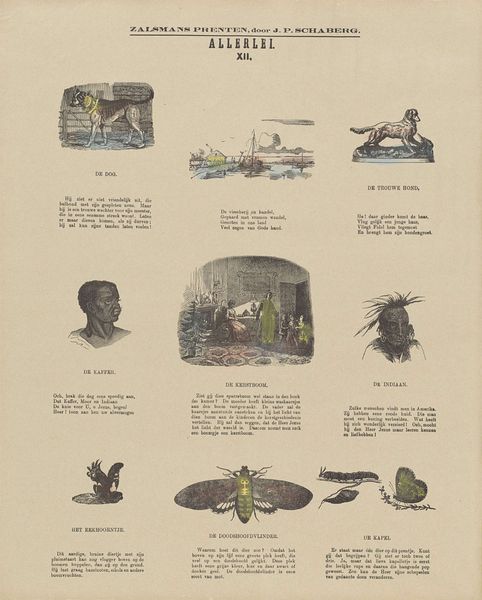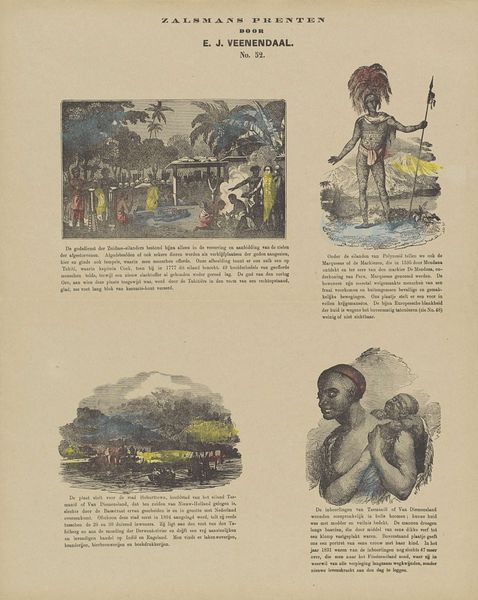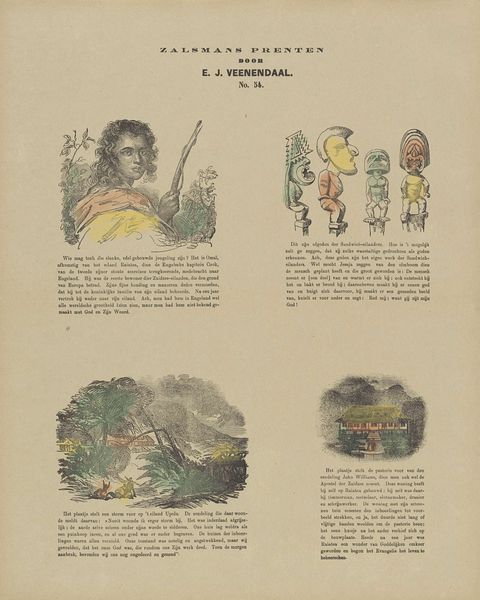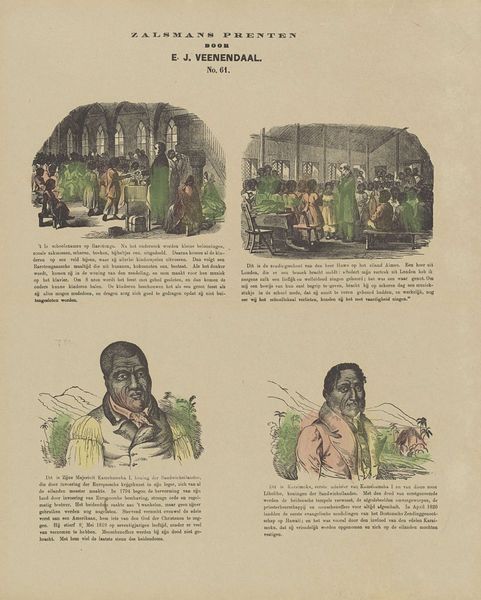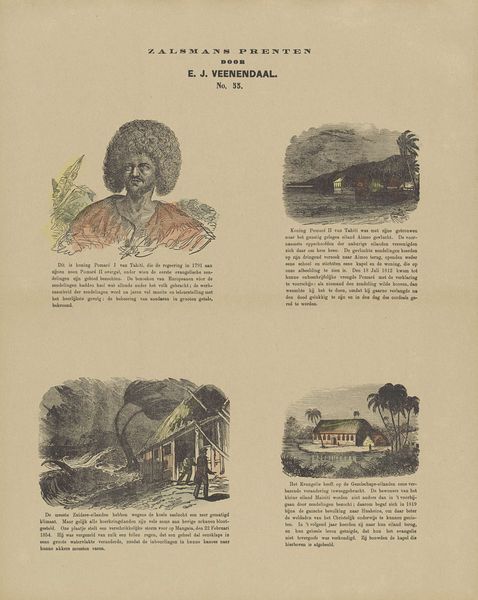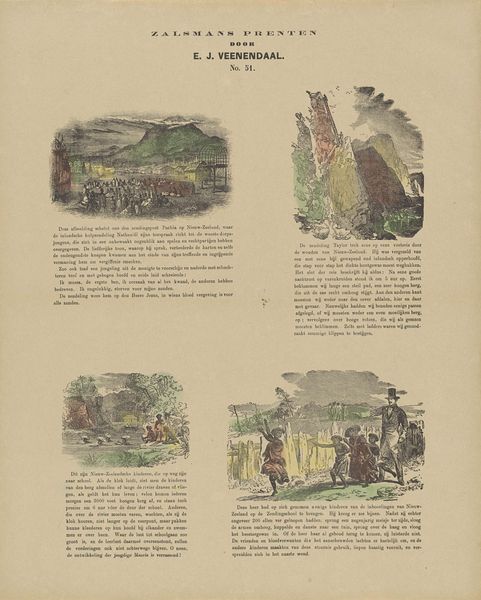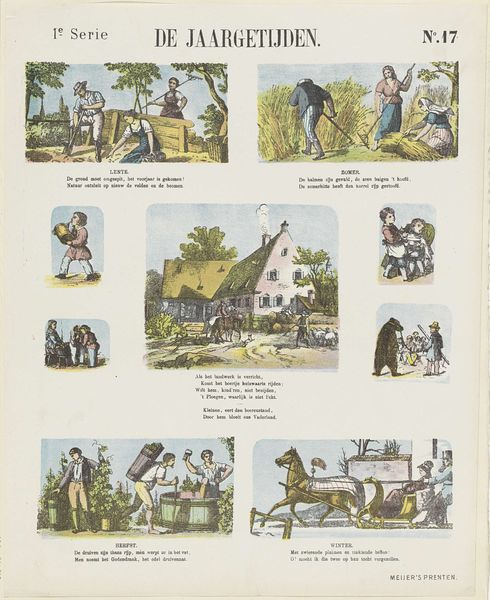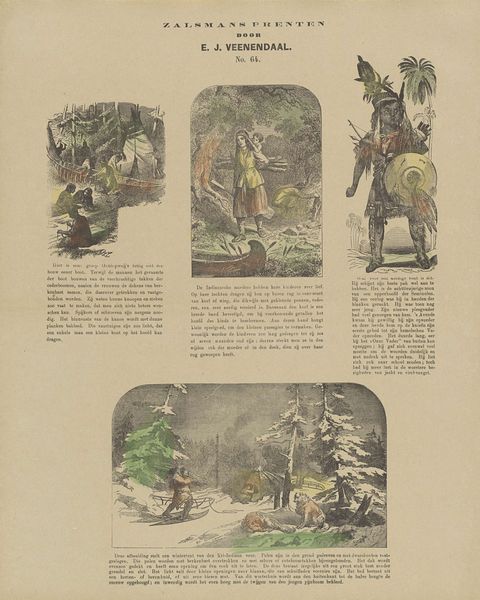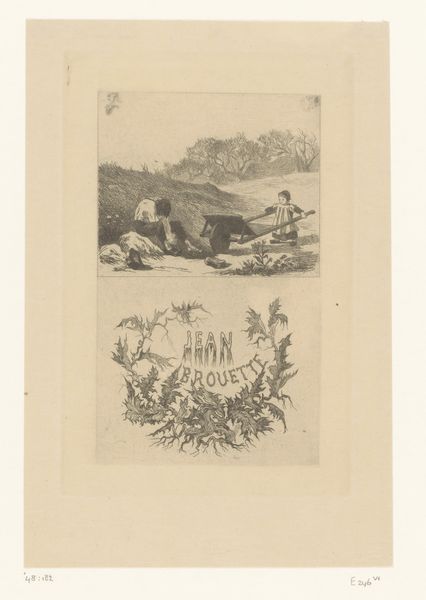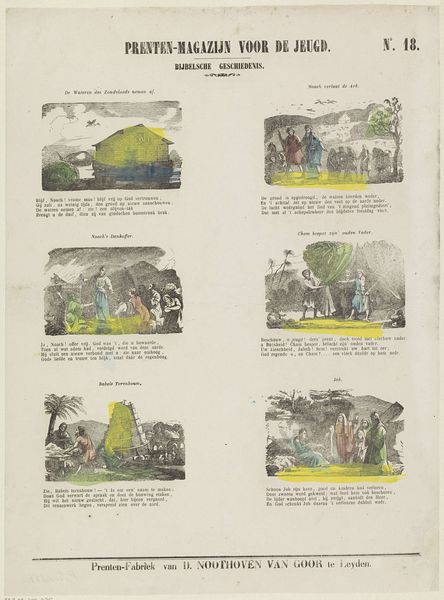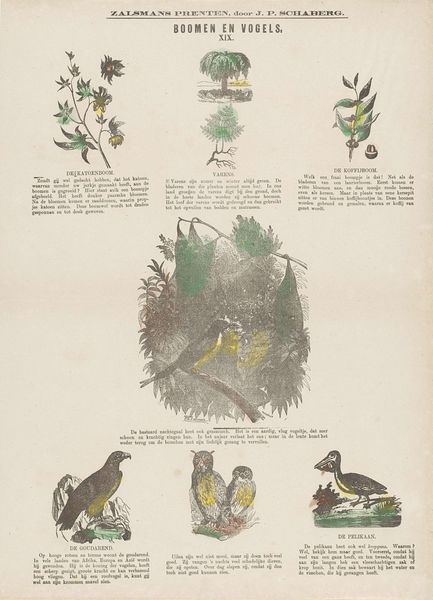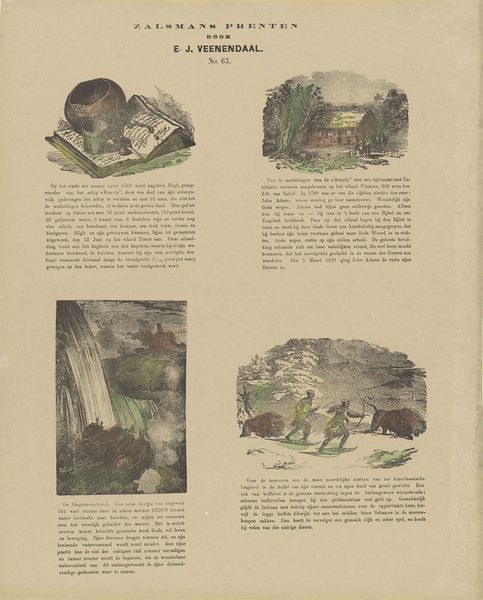
print, engraving
#
aged paper
#
quirky sketch
#
narrative-art
# print
#
old engraving style
#
sketch book
#
landscape
#
personal sketchbook
#
idea generation sketch
#
sketchwork
#
sketchbook drawing
#
storyboard and sketchbook work
#
sketchbook art
#
engraving
Dimensions: height 426 mm, width 345 mm
Copyright: Rijks Museum: Open Domain
Curator: This fascinating composite print, "Nieuw-Zeeland en Nieuw-Zeelanders," created by George Baxter between 1869 and 1882, offers a glimpse into 19th-century perceptions of New Zealand and its inhabitants. What strikes you first about it? Editor: The page, rendered in that old engraving style, immediately suggests the historical distance. But it’s the combination of idyllic landscapes with scenes of labor and these portrait studies that catches the eye; they feel a bit incongruous together, almost like different layers of colonial perspective laid bare. Curator: Precisely. The composition is compartmentalized; we have different vignettes including landscape and portraiture. Baxter uses line work beautifully; consider the detail etched in those faces and the variation in cross-hatching to render light and shadow. He's creating a certain scientific impression here too. Editor: Scientific, maybe, but I see it as deeply constructed by a colonial gaze. It presents these ‘exotic’ landscapes and peoples as objects of study, contained and categorized for European consumption. I find myself asking whose stories are missing from these frames? What did these carefully curated images really leave out? Curator: You raise a vital point. Yet the engraving technique also warrants attention: look at the delicacy of the lines and the subtly applied colour washes. Baxter’s command of the medium to reproduce a convincing landscape remains compelling in its own way, a visual construction rooted in careful execution. Editor: A masterful colonial projection, maybe? The contrast between the romanticized landscapes, and the small-scale rendering of communal life are stark to the point that one questions what narrative value this supposed documentary project might possess. What social function do such prints have? How did they enforce the notion of ‘otherness’ amongst viewing communities back home? Curator: So, while acknowledging the ethical dimension in our perception, should that then erase any recognition for visual complexity itself in this engraving? Surely there remains formal technique even through an oppressive cultural prism? Editor: Definitely not, however recognizing technique absent ethical context just replicates this piece’s initial error. Today it becomes an opportunity to analyze colonialism’s pervasive, deeply entrenched structure, and to become better at detecting the ideological power that exists, concealed, inside of these pretty objects.
Comments
No comments
Be the first to comment and join the conversation on the ultimate creative platform.
